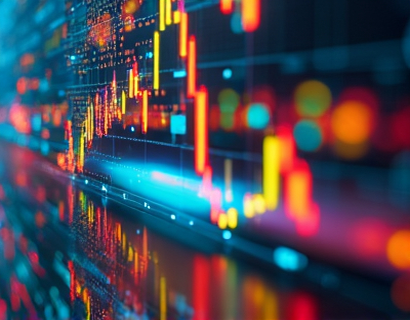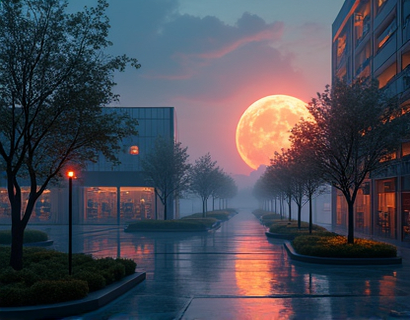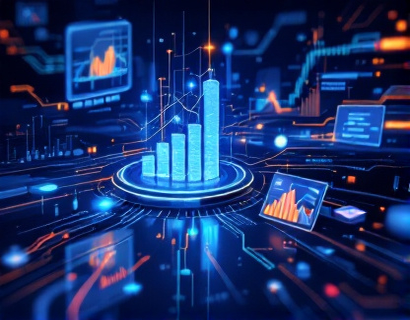Unlock Your Artistic Potential: Exploring the World of Online Art Marketplaces
In the digital age, the landscape of art consumption and creation has undergone a transformative shift. The traditional galleries and art fairs, while still holding significant value, are now complemented by innovative online platforms that bridge the gap between artists and art enthusiasts. These platforms offer a unique opportunity for artists to showcase their work to a global audience and for collectors to discover one-of-a-kind art pieces from the comfort of their homes. This article delves into the benefits and functionalities of these online art marketplaces, highlighting how they can help unlock your artistic potential and provide a thriving environment for creativity to flourish.
The Rise of Online Art Marketplaces
The advent of the internet has democratized the art world, making it more accessible than ever before. Online art marketplaces have emerged as a pivotal force in this evolution, offering a virtual space where artists can exhibit their work and connect with potential buyers. These platforms have revolutionized the way art is bought and sold, breaking down geographical barriers and providing a level playing field for both emerging and established artists.
One of the key advantages of these online marketplaces is their ability to reach a wider audience. Traditional art venues often have limited exposure, restricted by physical location and attendance. In contrast, online platforms can attract visitors from around the globe, significantly increasing the visibility of the artworks. This expanded reach not only benefits artists by potentially boosting sales but also enriches art enthusiasts who can explore a diverse array of styles and mediums.
Benefits for Artists
For artists, joining an online marketplace can be a game-changer. One of the primary benefits is the ease of setting up an online presence. Gone are the days of creating physical portfolios, attending numerous gallery showings, and networking extensively to gain recognition. Online platforms provide a streamlined process for artists to upload their work, write descriptions, and set prices, all from the convenience of their own studios.
Moreover, these platforms often offer tools to help artists manage their careers more effectively. Features such as sales tracking, customer feedback, and analytics can provide valuable insights into market trends and consumer preferences. This data can be instrumental in helping artists refine their craft, adapt to market demands, and strategize for future projects.
Discovering Unique Artworks
For art enthusiasts, online marketplaces are treasure troves of unique and exclusive pieces. The variety of art available on these platforms is vast, ranging from traditional mediums like painting and sculpture to contemporary forms such as digital art and mixed media. This diversity ensures that there is something for every taste and preference, making it easier for collectors to find that perfect addition to their collections.
Another significant advantage is the ability to discover emerging artists. While established names may dominate traditional art spaces, online platforms often highlight the work of new and up-and-coming creators. This exposure not only supports the growth of new talent but also introduces art enthusiasts to fresh perspectives and innovative techniques.
The Buying Experience
The purchasing process on these online marketplaces is designed to be user-friendly and secure. High-quality images and detailed descriptions help buyers make informed decisions. Many platforms also offer features such as zoom functionality, allowing collectors to examine the artwork in great detail. Additionally, secure payment gateways and reliable shipping options ensure a smooth transaction process, building trust and confidence among users.
Some platforms even provide authentication and provenance services, adding an extra layer of assurance for buyers. This is particularly important for high-value artworks, where authenticity and history play a crucial role in determining the piece's worth.
Building a Community
One of the most compelling aspects of online art marketplaces is the sense of community they foster. These platforms bring together artists and collectors from diverse backgrounds, creating a vibrant and supportive environment. Artists can engage with their audience, receive feedback, and build a loyal following. Collectors, on the other hand, can connect with like-minded individuals, share insights, and participate in discussions about art trends and investments.
Many platforms also host virtual events, webinars, and workshops, further enriching the community experience. These activities provide opportunities for learning and networking, helping both artists and collectors to grow and thrive in the art world.
Challenges and Considerations
While the benefits of online art marketplaces are numerous, it is essential to be aware of potential challenges. One of the primary concerns for artists is the competition. With so many platforms and artists, standing out can be difficult. To succeed, artists need to focus on creating distinctive and high-quality work, as well as effectively marketing their presence on the platform.
For collectors, the abundance of choices can sometimes lead to decision fatigue. It is crucial to set clear criteria for what you are looking for in a piece of art, whether it's the artist's style, the medium, or the emotional impact. Additionally, understanding the investment aspect of art collecting is important, as the value of art can fluctuate over time.
Future Trends in Online Art Marketplaces
The future of online art marketplaces looks promising, with several trends shaping the industry. One notable trend is the integration of blockchain technology, which can enhance the authenticity and ownership verification of digital artworks. This technology, often associated with NFTs (Non-Fungible Tokens), is gaining traction and is likely to become more prevalent in the art world.
Another trend is the increasing collaboration between online platforms and physical galleries. This synergy can provide artists with a broader reach, combining the benefits of online exposure with the prestige of physical exhibitions. Additionally, the rise of virtual and augmented reality is opening new avenues for immersive art experiences, allowing collectors to explore and interact with artworks in innovative ways.
Conclusion
Online art marketplaces have transformed the way art is created, shared, and appreciated. For artists, these platforms offer a powerful tool to expand their reach and connect with a global audience. For collectors, they provide access to a diverse and dynamic selection of unique artworks. By embracing these platforms, both artists and art enthusiasts can unlock their full potential and contribute to a thriving and inclusive art community.
As the digital landscape continues to evolve, the opportunities for artistic expression and discovery will only grow. Whether you are a seasoned artist or a passionate collector, the world of online art marketplaces is a place where creativity knows no bounds.











































